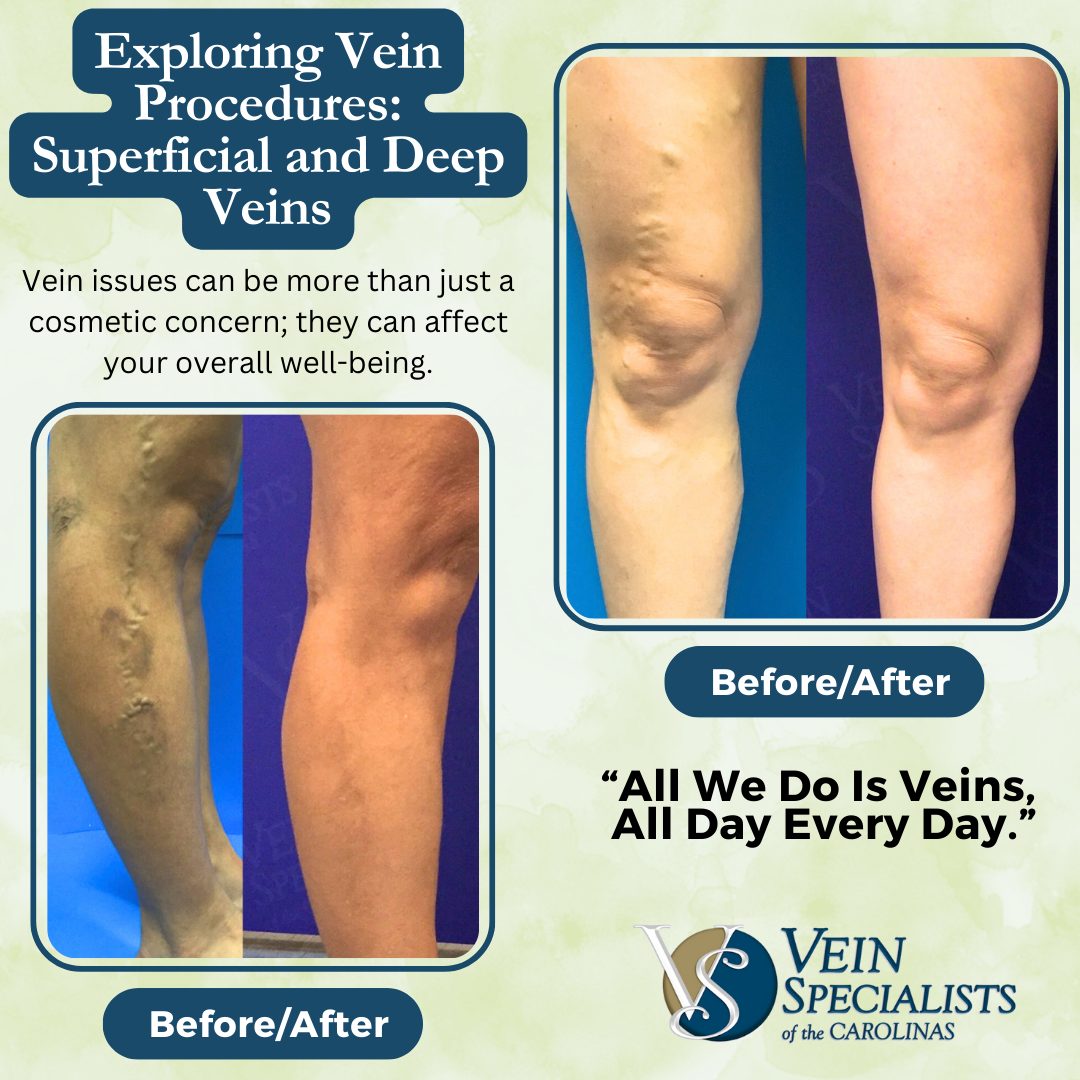Vein issues can be more than just a cosmetic concern; they can affect your overall well-being.
Understanding the variety of procedures available for superficial and deep veins is crucial. Here’s a breakdown of the advanced vein procedures we offer:
Superficial Vein Procedures:
- Radiofrequency Ablation (RFA): This treatment, also known as endovenous ablation, employs radiofrequency energy to seal and close varicose veins in the legs. RFA is minimally invasive and highly effective at resolving the discomfort and appearance of varicose veins.
- Clarivein™: Utilizing a mechanicochemical approach, Clarivein™ is used for the ablation of saphenous veins. This technique combines mechanical rotation with chemical agents to close the problematic veins.
- Varithena™: Endovenous microfoam chemical ablation of saphenous veins is achieved with Varithena™. It uses microfoam to close the veins and is particularly suitable for those who may not be candidates for thermal ablation.
- Venaseal™: This procedure involves the use of cyanoacrylate glue to occlude saphenous veins, offering a safe and effective alternative to thermal ablation techniques.
- Microphlebectomy: When varicose veins need to be physically removed, microphlebectomy is a minimally invasive procedure that allows for precise removal of the affected veins.
- Sclerotherapy: Sclerotherapy is a versatile treatment for both spider and varicose veins. It can be visually guided, ultrasound guided, and administered in different forms, including liquid and foam, to suit the specific needs of each patient.
Deep Vein Procedures:
- Venography: Contrast dye x-rays of veins, called venography, provide detailed imaging of deep veins, allowing for the diagnosis of blockages and other issues.
- Intravenous Ultrasound (IVUS): IVUS offers real-time ultrasound imaging from within the veins, enhancing the precision of diagnostics and procedures within deep veins.
- Venoplasty and Stenting: Blocked veins can often be reopened and supported with the use of venoplasty (balloon angioplasty) and stenting. These procedures improve blood flow and reduce symptoms associated with deep vein issues.
- Coil Embolization: Pelvic varicose veins can be treated with coil embolization, a procedure that involves the placement of coils within the veins to block blood flow and alleviate symptoms.
- Insertion and Retrieval of Inferior Vena Cava Filters: For patients at risk of blood clots, the insertion and retrieval of inferior vena cava (IVC) filters can prevent clots from reaching vital organs.
- PharmacoMechanical Thrombectomy (AngioJet): Deep vein clots (DVT) can be removed effectively with the use of pharmacoMechanical thrombectomy. This procedure combines pharmacological agents with mechanical clot removal techniques.
Our comprehensive range of vein treatments and procedures are designed to address both superficial and deep vein issues, allowing us to tailor treatments to your specific needs. If you’re experiencing vein-related discomfort or aesthetic concerns, don’t hesitate to contact us for an appointment. Your journey to healthier, more comfortable legs starts here!
“All We Do Is Veins, All Day Every Day.”
#VeinCare #VeinProcedures #VeinTreatments #VascularHealth #Sclerotherapy #RFA #IVUS #Venoplasty #VeinHealth #VaricoseVeins #SuperficialVeins #DeepVeins #MedicalProcedures #VascularHealth #MinimallyInvasive #AestheticConcerns #LegHealth #VenousHealth #VeinClinic #DVTTreatment #VascularIntervention #IVCFilter #HealthyLegs #VascularMedicine #PharmacoMechanicalThrombectomy


